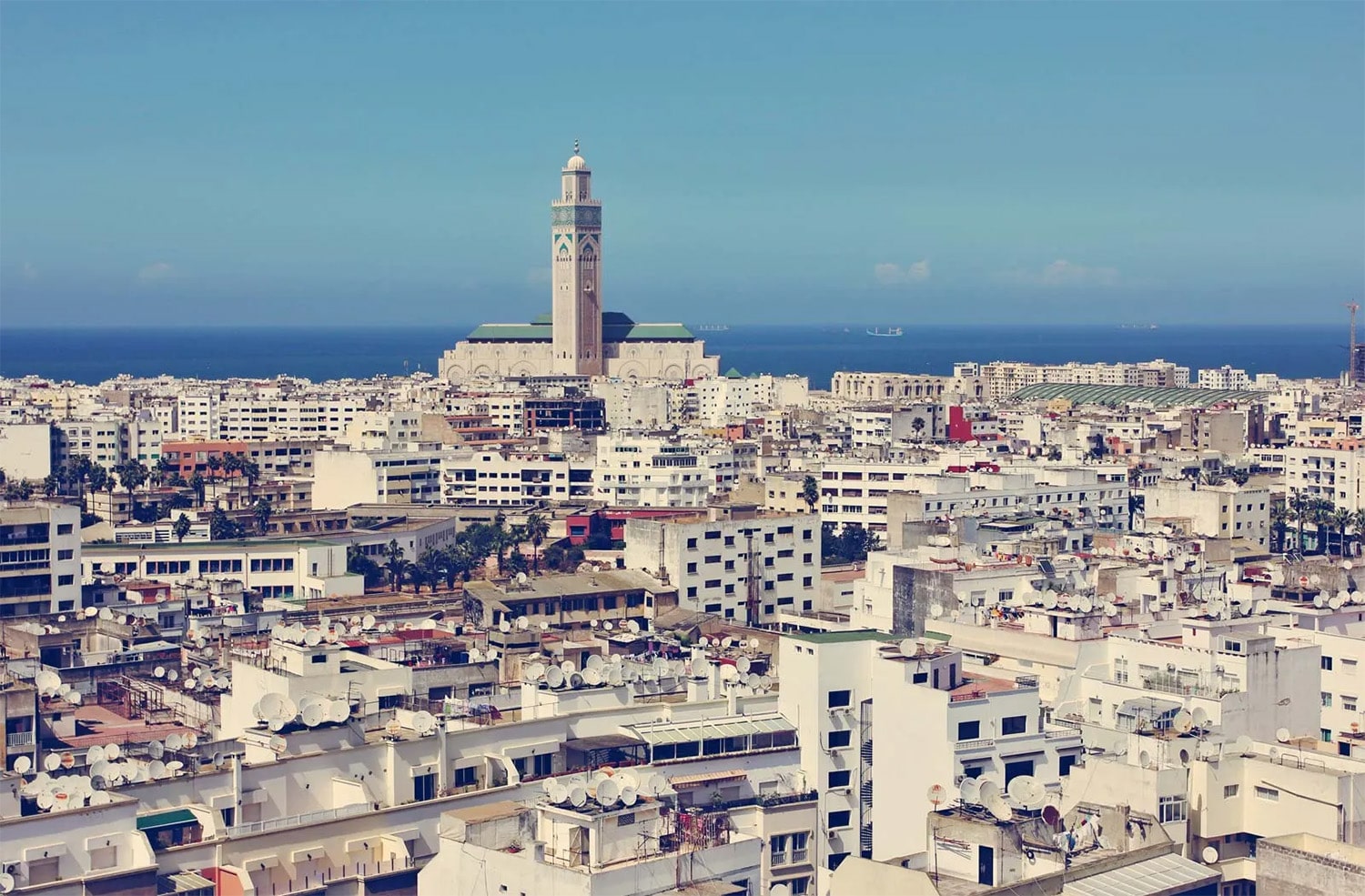
36 interesting facts about Casablanca
- 👁️ 291
Casablanca, a city that often evokes images of the classic Hollywood film of the same name, is far more than just a cinematic icon. It’s the largest city in Morocco and serves as the country’s economic and business hub. Situated on the Atlantic coast, Casablanca is a fascinating blend of modernity and tradition, where Moroccan culture, history, and architecture converge with contemporary lifestyle and urban development. From its historic medina to the bustling business districts, the city offers a unique glimpse into the heart of Morocco. Here are 36 interesting and informative facts about Casablanca that highlight its significance, beauty, and the vibrant life within it.
- Casablanca is Morocco’s largest city and its economic capital.
- The city’s name means “White House” in Spanish, reflecting its colonial history.
- Casablanca is home to the Hassan II Mosque, the second-largest mosque in the world.
- The mosque’s minaret is the world’s tallest at 210 meters (689 feet).
- Casablanca was originally a small fishing village called Anfa before it became a key port city.
- The 1942 film “Casablanca” made the city famous worldwide, even though it was shot entirely in Hollywood.
- Casablanca hosts Morocco’s largest port, which is also one of the biggest artificial ports in the world.
- The city has a Mediterranean climate with oceanic influences, leading to mild, wet winters and warm, dry summers.
- Casablanca is a major industrial hub, with sectors like fishing, electronics, textiles, and more.
- The city’s Art Deco architecture in the New Town area is a legacy of the French colonial period.
- Casablanca’s tramway system, launched in 2012, is a major step towards modernizing the city’s public transport.
- The United Nations Educational, Scientific and Cultural Organization (UNESCO) recognized Casablanca’s 20th-century architecture as part of its “Modern Heritage” program.
- The Casablanca Stock Exchange is one of Africa’s largest stock exchanges.
- The city’s Corniche is a scenic coastline area popular for its beaches, pools, and nightlife.
- The Royal Palace of Casablanca, though not open to the public, is an important architectural and historical site.
- Casablanca’s Central Market is a vibrant spot where locals and tourists shop for fresh produce, spices, and seafood.
- The city was an important strategic site during World War II, hosting the Casablanca Conference in 1943 attended by Churchill and Roosevelt.
- Casablanca is known for its diverse culinary scene, blending Moroccan, French, and international cuisine.
- The Habous Quarter, or New Medina, is famous for its traditional Moroccan architecture, markets, and craft shops.
- Ain Diab is Casablanca’s most popular beach, known for its golden sand and clear blue waters.
- The city was largely rebuilt in the 20th century after an earthquake in 1755 destroyed much of it.
- Casablanca is a setting for numerous Moroccan and international films beyond the namesake 1942 movie.
- The city’s Jewish Museum is the only museum in the Arab world dedicated to Judaism and its history in Morocco.
- Casablanca’s skyline is rapidly growing, with numerous high-rise buildings and skyscrapers under construction.
- The city is a blend of various architectural styles, including Moroccan, Art Deco, and modernist.
- Casablanca’s Mohammed V International Airport is the busiest airport in Morocco.
- The city is a focal point for Moroccan arts and culture, hosting several festivals and exhibitions annually.
- Casablanca’s street art scene is vibrant, with numerous murals and graffiti that adorn the city’s walls.
- The city has several green spaces and parks, including the Parc de la Ligue Arabe and the Parc Sindibad.
- Casablanca’s Mers Sultan neighborhood is one of the oldest in the city, known for its historical significance.
- The city played a significant role in Morocco’s fight for independence from French colonial rule.
- Casablanca is a melting pot of cultures, with a population that includes people from various ethnic and religious backgrounds.
- The city is the main gateway to Morocco for most international travelers.
- Casablanca’s cultural landscape is constantly evolving, with a growing emphasis on contemporary art and design.
- The city’s universities and educational institutions are among the most prestigious in Morocco.
- Casablanca’s nightlife is lively, with numerous bars, clubs, and cafes that cater to a diverse crowd.
Casablanca is a city that embodies the spirit of Morocco, offering a unique blend of history, culture, and modernity. Its architectural marvels, bustling markets, and scenic landscapes tell the story of a city that has continually adapted and thrived throughout its history. As a hub of economic activity and cultural exchange, Casablanca plays a pivotal role in shaping the future of Morocco while staying rooted in its rich heritage. Whether it’s through exploring its historic sites, enjoying its culinary delights, or simply wandering its vibrant streets, Casablanca offers a captivating experience for all who visit. The city’s ongoing development and its people’s warm hospitality make it a must-visit destination, embodying the heart and soul of Moroccan life.
Casablanca, a city that often evokes images of the classic Hollywood film of the same name, is far more than just a cinematic icon. It’s the largest city in Morocco and serves as the country’s economic and business hub. Situated on the Atlantic coast, Casablanca is a fascinating blend of…